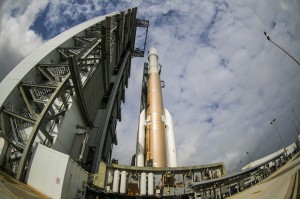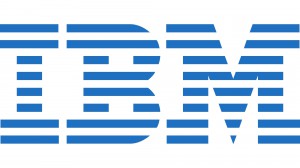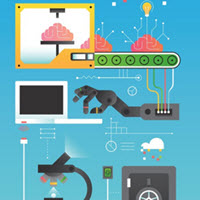Disruptive Innovation
The Top 5 Disruptive Technologies of 2014
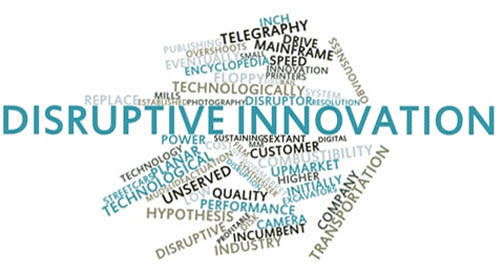
An Investor’s Guide to Disruptive Innovation
In this article, Jason Stutman talks about the 5 most disruptive technologies of last year and touches on some of the industries that they will disrupt. Some of which we have discussed in class. He lists that Additive Manufacturing, The Automated World, The Internet of Things, Next Generation Interface, and Next Generation Genomics are the five most disruptive technologies. Additive Manufacturing is the process of buiilding three-dimensional objects with machines using CAD software (3D Printing). This is disrupting manufacturing as a whole because it can literally make anything and results in less waste, faster output, and lower operational costs. Automated World is what its title suggests, automation. This technology could disrupt the job market and affect areas such as automated retail, advanced robotics, and artificial intelligence. The Internet of Things is the concept of everyday objects becoming connected to the web. This disruptive technology is directly tied to the automated world. Next Generation Interface refers to the fact that our devices become smaller and smaller that we will need a new means on interaction with them. Lastly, Next Generation Genomics refers to treatment based on genetic sequencing rather than symptoms. All of these are disruptive based on facts sited in the article. What technologies will be considered the most disruptive for 2015?
Rocket maker for NASA and the Air Force to begin 3D printing parts
United Launch Alliance (ULA), who makes rockets for NASA and the Air Force, is planning to 3D print 100 parts for the next-gen model of its Vulcan rocket, which is expected to launch in 2019. Rockets cost about $165 million for ULA, and 3D printers are expected to save as much as $1 million per year in manufacturing costs. Creating these parts in house with 3D printing allows ULA to maintain internal quality control without having to deal with other companies. ULA has previously used 3D printing to make molds and guides, but has not used it to make parts before. Additionally, the company expects to use 3D printing for “rapid prototyping of parts.” This allows engineers to test a part for functionality before having to go through production or deal with a supplier.
Would you expect 3D printing to be adopted in something like rocket manufacturing?
What other manufacturers do you think could benefit from 3D printing parts?
Affordable 3D Printing May Be Just Around the Corner

Earlier in the semester when I gave a presentation on 3D printing, I suggested that Consumer 3D Printing won’t be mainstream for another 5-10 years. Well, it looks like it may be here sooner than expected. A team of engineers recently set out to develop a cheap, high-quality consumer 3D printer. With their product, named Tiko, they did just that. Tiko is a 3D printer that is easy to use, non-proprietary, accurate, Wi-Fi enabled, and even comes with its own software to design 3D models on (and be sent right to the printer) — and you can get one for a $179 pledge! This piqued a lot (well, several) peoples’ interest. The group of engineers created a Kickstarter campaign with the goal of raising $100,000 in order to further develop and mass produce the printer. As of now, with 10 days left in the campaign, $2,251,129 has been pledged by 12,663 backers — that is around 178x what they asked for.
As the Kickstarter campaign shows, there is a lot of interest in consumer 3D printing. With Tiko, it looks like it may soon be a reality. I personally think a product like Tiko can make a huge impact, especially in the toy industry. As I mentioned a lot in more presentation earlier in the semester, I think that a company like LEGO should be concerned by the arrival of product like Tiko. If I had one, for example, I could print all of the LEGO pieces that I want, and for much cheaper than buying actual LEGO sets.
What do you guys think, though? Do you guys think this could make a significant impact in the consumer industry, or is it still too early for consumer 3D printing to enter the mainstream market? Let me know what you think!
Disruptive innovators and missteps
As a company trying to take on the big boy incumbents it is paramount to avoid the types of mistakes that will greatly effect your adoption rate. Sling was making some major headway in the market and enjoying a good buzz around its product. All until the march madness mishap that is talked about here. Is this ultimately going to end up fatal for sling? The biggest draw of the product was the fact that you wouldn’t have to miss the big events playing on your TV again, well if that is no longer a guarantee what will become of Sling?
Here is the article let me know what you think.
http://www.theverge.com/2015/4/5/8348885/sling-tv-ncaa-finals-problems-watching
ATMs Get a Cloud Update
NCR, the leader in ATM technology, introduced new 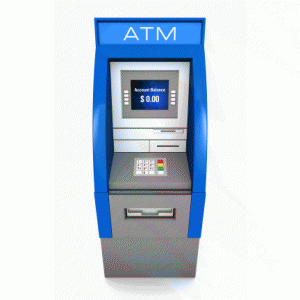 software that will allow ATMs to use the cloud in order to improve security and lower costs. About 75% of ATMs run Windows XP, which Microsoft suspended support for in April 2014. The new cloud software will allow machines to be updated remotely instead of the manual uploads required with Windows XP. NCR claims that this will allow banks to service machines twice as fast as before.
software that will allow ATMs to use the cloud in order to improve security and lower costs. About 75% of ATMs run Windows XP, which Microsoft suspended support for in April 2014. The new cloud software will allow machines to be updated remotely instead of the manual uploads required with Windows XP. NCR claims that this will allow banks to service machines twice as fast as before.
Do you think that NCR was late to implement this technology since Windows XP was no longer supported?
What other disruptive technologies do you think could be implemented into ATMs?
5 Technology Products That Won’t Let You Break the Law
5 Technology Products That Won’t Let You Break the Law
Since we talked about the safety measures of 3-D printers in class during our disruptive innovation class, I thought this article was informative of how safety measures are being taken into account.
The article states that algorithms are used to prevent people from creating gun parts as well as print counterfeit money. Even Photoshop forbids you from scanning and printing money.
Do you think these technologies are actually smart enough to prevent people from breaking the law? What would be some ways people could get around these preventions?
https://www.yahoo.com/tech/5-technology-products-that-wont-let-you-break-the-116183169724.html
IBM to Invest in IoT
IBM will invest $3 billion over four years to create an Internet of Things business unit. The focus of the unit will be on travel, logistics, insurance, public utilities, transportation, and retail. IBM plans on partnering with other companies for this project, such as AT&T and semiconductor companies. IBM also started that they are going to work with engine manufacturer, Cummins, to collect real time data on products. Whirlpool is also working with IBM to better predict when appliances need servicing. Additionally, police departments in Durham, NC and Memphis, TN use IBM products to target crime hotspots. The IDC estimates that there will be 28 billion IoT devices by 2021.
Do you agree that IBM should partner with other companies?
Do you think that IBM is too late, or are they entering the market at the right time?
Deloitte Threatened by Disruptive Innovations
This is a really short and informative article based on how big corporations like Deloitte view new and disruptive competitive risks and opportunities. They are crafting effective strategies around four dimensions you will find in the article, which could be used within our capstone projects.
Take a look and see….Deloitte
Big Bang Disruption
How Innovations Become Better And Cheaper
In this Forbes article, the authors Paul Nunes and Larry Downes expand on the idea of disruptive innovation and talk about Big Bang Disruption. The key difference between the two is that Big Bang disruption does not follow conventional strategic paths or normal patterns of market adoption. Big bang disruptions experience dramatic market adoption right off the bat and cause unintended collateral damage to incumbent businesses. The defining characteristic of a Big Bang Disruption is that from the moment of introduction, it is better and cheaper than the traditional product and services it replaces, and leads to sudden abandonment of the old for the new. One example that they use throughout the article is the smartphone and how it disrupted books, video cameras, papers, wristwatches, cash registers, day timers, wallets, keys, newspapers and magazines, pocket calculators, and many more. Can you think of any other products that resulted in Big Bang Disruption?
Delphi’s Autonomous Audi — Is the future within reach?
In this article by Car and Driver, Delphi, a car tech company that recently finished the first cross-country autonomous rode trip using a specialized Audi SQ5 is on display. The Audi, which was fitted with a variety of Delphi tech and a wild paint job, traveled over 3,400 miles and drove itself for 99% of the time, according to the company. That means that only approximately 35 miles out of an entire coast-to-coast road trip were controlled by a human. However, aside from the…unique…exterior color scheme, there were very few cues to tip anyone off that this is a self-driving car. This proof-of-concept Audi shows that driverless tech is, in my opinion, on the verge of mass deployment in the automotive industry. I think this tech will eventually disrupt existing insurance underwriting practices and government regulations the most. For insurance companies, a variety of parameters for how premiums are assessed (driver experience, age, etc.) will have to be reexamined in the wake of this new autonomous tech, potentially altering their bottom line. Do you think there are industries that will be disrupted in different ways?


